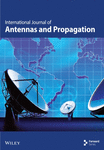A Practical Method for Measuring Incident Microwave Power in RF Systems of Particle Accelerators
Abstract
In high reflection microwave power measurements with load impedance mismatch, the limited directional performance of directional couplers introduces interference from reverse signals, which affects the accuracy of incident microwave power measurements. To address this issue, this paper will present a method that utilizes auxiliary circuits to change the amplitude and phase of the output signals from two directional couplers with lower directional performance and then combines them to cancel out the interference signal components. This microwave measurement method was validated on a 162.5-MHz high-power microwave experimental platform, reducing the maximum uncertainty in power measurement results from about ± 20% using a single directional coupler to −1.5%–3.5% adopting the proposed method in a standing wave cycle. This improvement was achieved by using two directional couplers with directional performances of 19.1 and 20.3 dB.
1. Introduction
A directional coupler [1, 2] is a passive four-port device with the capability to extract microwave signals directionally. It is widely utilized in various fields, including communication systems [3, 4], radar systems [5–7], aerospace [8], and radiofrequency systems in particle accelerators [9–12]. The directivity of a directional coupler directly influences its ability to respond to signals from two different directions [13, 14]. Particularly in microwave transmission systems operating under conditions of full reflection, inadequate directivity of the directional coupler can result in substantial measurement errors, thereby compromising the accuracy of signal measurements. In particle accelerator systems, especially in superconducting accelerator radiofrequency systems, RF cavities often spend a significant portion of their operation time in states characterized by high reflection, even full reflection. In such scenarios, inadequate directivity of the directional coupler can lead to notable inaccuracies in power measurements. This, in turn, poses challenges in meeting the engineering requirements for cavity physical analysis, microwave power source protection, and monitoring the operation status of transmission line systems [15–17].
Due to variations in processes and technological capabilities, the directivities of directional couplers that impact the accuracy of RF signal measurements often fail to meet the intended design targets. Commercial directional couplers typically provide directivity of only about 20–30 dB. In some specialized research fields, custom-designed directional couplers can occasionally achieve around 40 dB of directivity [18–22]. However, the development of specific directional couplers tailored to particular transmission line types, frequencies, and power parameters demands significant time and effort from researchers. Moreover, when application conditions change, redesign, reproduction, and debugging are necessary, resulting in a substantial research and engineering burden. Furthermore, the field of microwave systems for measurement and control encompasses a wide range of directional coupler types, each requiring distinct design principles and engineering solutions. Consequently, finding a universal method that significantly enhances microwave measurement accuracy when directional coupler directivity is insufficient, applicable to various types of directional couplers, and holds substantial scientific significance and engineering practical value.
2. Experimental Methods
2.1. Power Measurement Errors Caused by Insufficient Directivity of the Directional Coupler
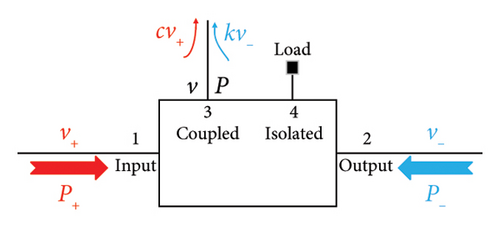
The measured power strongly is determined by the phase φ, which cannot be reliably determined due to the uncertainty of the superconducting cavity’s state.
As illustrated in Figure 2, when the directional coupler exhibits poor directional characteristics, the measurement of output power from the RF power source in the superconducting accelerator system can result in a significant margin of error. For instance, with a directional coupler having only 20 dB of directivity, the measurement error for RF power can range from −19% to 21%. However, when the directional coupler achieves 40 dB of directivity, the RF power measurement error can be confined within a much more manageable range of ± 2%.
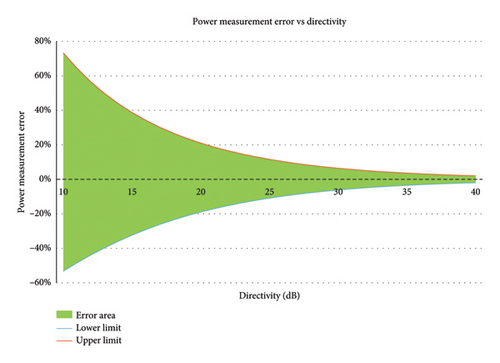
Hence, to achieve accurate RF power measurements in superconducting accelerator systems, there is often a stringent need for high directivity. Nonetheless, commercial directional couplers frequently fall short of achieving the necessary high directivity, and developing custom directional couplers with specific parameters requires a significant amount of effort. Therefore, discovering a universally applicable method that significantly improves microwave measurement accuracy, even in cases of inadequate directivity across various types of directional couplers, holds profound scientific significance and engineering practicality.
2.2. A Proposed Method for Achieving High-Precision Measurement of Microwave Power Using Two Directional Couplers With Low Directivity in the Superconducting Accelerator Radiofrequency System
As illustrated in Figure 3, the use of two directional couplers involves extracting signals from the coupling ports of directional Coupler 1 and directional Coupler 2. These signals are then subjected to amplitude and phase adjustments via an attenuator K and a phase shifter ϕ, which can be replaced by a transmission line with equal insertion phase shift. This adjustment ensures that the amplitudes of the reverse signal components in both signals are equal, and their phases are opposite. Subsequently, these two signals are combined through a two-in-one combiner. At this stage, the combined signal at the combiner’s output contains only the forward signal component, with no reverse signal components. In other words, the magnitude of the power measured at the combiner’s output is solely dependent on the signal in the measured direction. We can now proceed with a detailed description of the process and theoretical analysis as follows.
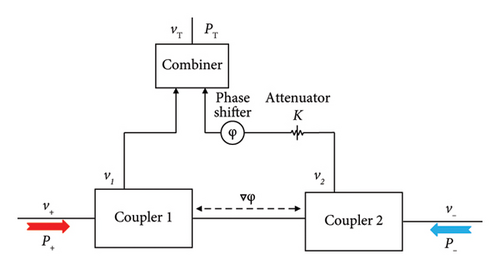
2.3. Experiment Conducted Through the Proposed Method
As shown in Figure 4, two directional couplers operating in the 162.5-MHz linear accelerator radiofrequency system of China Initiative Accelerator Driven System (CIADS) [23, 24] were selected. Their directivities are 19.1 dB and 20.3 dB, respectively. Following the proposed method above, a new equivalent directional coupler sampling measurement system was established with the assistance of circuit adjustments. This new directional coupler system achieved a directivity of 47.8 dB at 162.5 MHz.
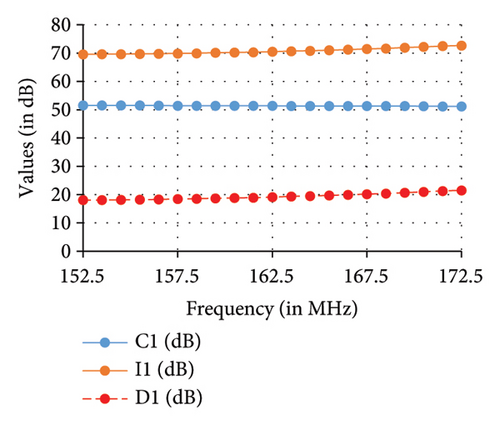
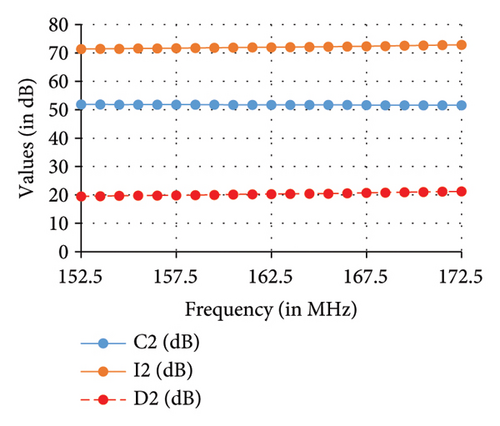
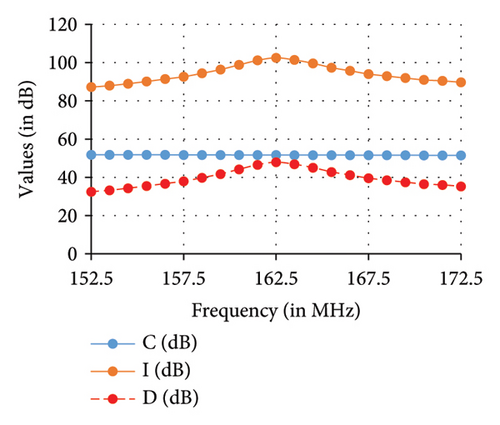
To further validate the effectiveness of the new equivalent directional coupler sampling measurement system for online measurements of incident microwave, the next step involves conducting experiments in CIADS RF high-power platform to simulate real operating conditions as illustrated in Figure 5. The microwave power source used in the experiment is a 162.5-MHz solid-state power source. To simulate the terminal in a full reflective state in different phases, a high-power sliding short circuit customized by Exir broadcasting is connected at the load end. The phase difference between the forward and reverse signals at the directional coupler is altered by changing the position of the short circuit’s shorting position. Finally, data over one standing wave cycle (approximately 923 mm) are recorded with microwave power meters, identified as model R&SNRP-Z211. It is worth noting that due to the limited isolation within the circulator in the solid-state power module used in the experiment, the reflected signal can affect the output of the module’s power amplifier, even with the same input excitation when the terminal’s reflective phase changes. To calibrate the experiment more accurately, a customized directional coupler designated as model DIRC-R318-A0 with 40-dB directivity was specially customized by Exir Broadcasting, and the incident microwave power measured with it is used as the calibration data for the experiment.
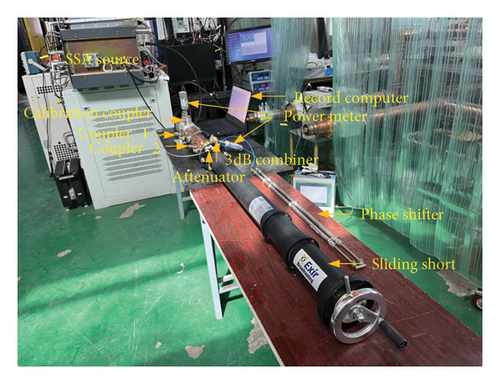
3. Results and Discussion
3.1. Results
Figure 6 illustrates the final results of our experiment. Throughout the experiment, we maintained a constant excitation of 0.6dBm to the solid-state power source. By adjusting the sliding short circuit, we changed the phase difference φ between the forward and reverse signal components extracted by the coupler over one standing wave cycle. Under this constant excitation, the output of the solid-state power source exhibited cyclic variations, ranging from 1.8 kW to 3.8 kW. The measured power values obtained from the equivalent new directional coupler system are closely matched those from the calibrated directional coupler. The error in measuring incident microwave power ranged from −1.5% to 3.5%, signifying a significant improvement in measurement accuracy and confirming the feasibility of the proposed method.
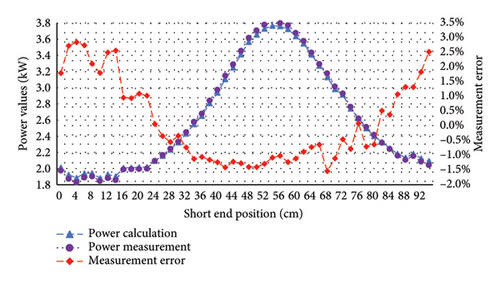
3.2. Discussion
- 1.
The directional coupler used for calibration in the experiment has its own limitations in terms of directivity, rated at 40 dB, with a measurement uncertainty of ± 2% in a fully reflective microwave transmission line system. While this initial evidence supports the significant enhancement of microwave measurement accuracy, it may not suffice for a more precise calibration of the measurement results.
- 2.
Due to the constraints imposed by the experimental conditions, the solid-state power source module used in the experiment has limited circulator isolation, resulting in substantial variations in its output, even with the same excitation, during full reflection experiments. In future experiments, there are plans to procure and incorporate a circulator with higher isolation between the solid-state power source and the directional coupler measurement device. This measure will further mitigate the impact of reflected power in the transmission line on the output of the solid-state power source. Subsequently, this would enable further calibration of the approach if the output power from the solid-state power source remains constant during operation.
4. Conclusions
After a thorough investigation into the substantial measurement errors in incident microwave power due to the inadequate directivity of directional couplers, especially during extended periods of full reflection in particle accelerator superconducting RF transmission systems, the plan is to explore a method involving amplitude and phase modulation using auxiliary circuits to cancel out the reverse crosstalk in the output signals from both couplers ends. This approach aims to achieve precise measurement of a single directional signal. The high-precision microwave measurement method is then theoretically analyzed, and the parameters of the new directional coupler system are calibrated using equipment such as network analyzers. Subsequently, a high-power measurement experimental platform is established to verify the enhanced performance in microwave power measurement accuracy within one reflection standing wave cycle in high-power systems of particle accelerators, thus comprehensively demonstrating the feasibility of the approach. In the future, more precise methods will be employed to further calibrate the measurement performance of the proposed method.
Conflicts of Interest
The authors declare no conflicts of interest.
Funding
This work was supported by the National Natural Science Foundation of China (Grant No. 11975288) and the Shenzhen Postdoctoral Research Funding of China.
Acknowledgments
This work was supported by the National Natural Science Foundation of China 11975288 and Shenzhen Postdoctoral Research Funding of China.
Open Research
Data Availability Statement
The data that support the findings of this study are available from the corresponding author upon reasonable request.



